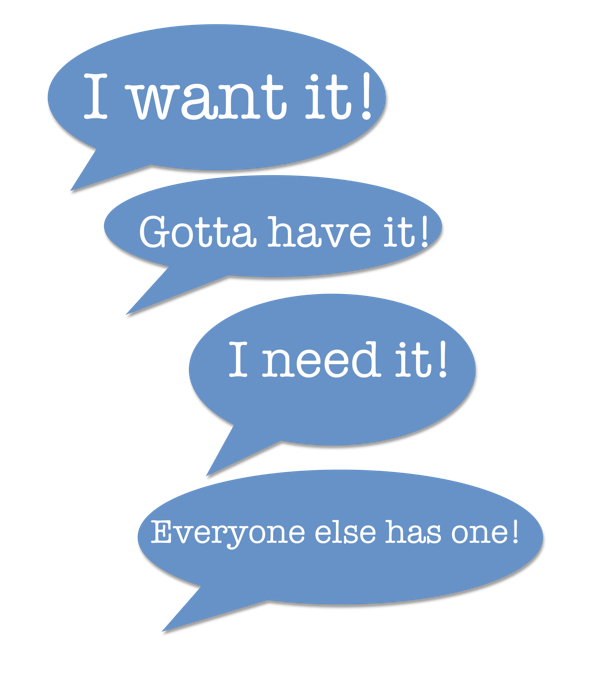Acceptance.
Mindfulness can help us learn to accept what is - to accept our life experience as it unfolds. As Eckhart Tolle likes to say, we must accept the "isness" of our lives. When we are mindful, we begin to observe whatever we are experiencing - our physical body, our thoughts, and our emotions - and simply notice our experience as it is happening. We notice our bodies: tightness, tension, openness. We notice our thoughts: "Why did I do that?" "I can't do this." Or, "I'm never going to get his all done." And, we notice our emotions: fear, sadness, joy.
One myth of mindfulness is that it eliminates all the bad stuff and leaves us to simply relish in the pleasant, joyful moments of life. Mindfulness does not eliminate difficult emotions. Instead, we become more skilled at self-awareness and better at understanding our experience without judging it or becoming overwhelmed by it. We learn to be with whatever is there and feel it fully - the pleasant, the unpleasant and the neutral. Rather than trying to get rid of it, fix it, or figure it out, we learn to sit with it, see it for what it is and accept it fully.
In this process, we begin to recognize that some things are simply out of our control, like other people's actions, illness or even our own feelings that can arise in response to those things. But by sitting with our experience, by observing what is there, and acknowledging it, we can begin to accept it as it is. We can be with our sadness, our frustration, our anger or our feeling of powerlessness, and simply recognize that those are all OK to feel and they are justified simply because we are feeling them. No judgment, just observation. Acceptance does NOT mean that we have to agree with the situation or that we have to like it, it simply means that we accept that it is happening.
While mindfulness helps us recognize that many things are outside of our control, it also helps us learn that there are many things within our control. We can begin to exercise our power to choose how we want to view our situation, we can choose how we want to respond to it and we can choose which actions we want to take to move forward in a healthy and meaningful way.
Mindfulness strategies we can use when faced with challenging situations:
(1) Focusing on A Pleasant or Neutral Present Moment Experience.
Sometimes accepting your current situation can be incredibly difficult, particularly when you are facing great challenges. Often that difficulty brings up strong emotions like fear or anger. When we are feeling overwhelmed and having difficulty sitting with strong emotions, it can be very helpful to direct our focus and attention to something neutral or pleasant. This is when our mindfulness practice gives us the insight to know that we are struggling or feeling overwhelmed, and the ability to place our attention on something more positive while our minds and bodies settle down.
Simple mindfulness practices like placing your attention on your breath, mindfully drinking your coffee, listening to the sounds around you or going outside and enjoying the full sensory experience of being in nature, can help you get out of your thinking mind and into your sensory world of experience. This can be at the very least a neutral experience and at best a quite pleasant one. Taking time out to take a few, deep, mindful breaths can also help activate your Rest and Digest response and turn off your Stress response. Practicing mindfulness in this way can help you relax, settle your mind, and add some pleasant, more joyful moments to your day. I love this poem that beautifully expresses how we can move mindfully through our day . . .
Walk Slowly (Danna Faulds) It only takes a reminder to breathe, a moment to be still, and just like that, something in me settles, softens, makes space for imperfection. The harsh voice of judgment drops to a whisper and I remember again that life isn't a relay race; that we will all cross the finish line; that waking up to life is what we were born for. As many times as I forget, catch myself charging forward without even knowing where I'm going, that many times I can make the choice to stop, to breathe, and be, and walk slowly into the mystery.
(2) Accepting What Is.
This may be much easier said than done, but it is the key to lowering our suffering. In Buddhist teachings, suffering is caused by our struggle against what is. Life can be painful, but our true suffering comes from our struggle against what we cannot change. We don't have to like it, we don't have to agree with it, we just have to accept that it is happening. This shift in mindset can help us move forward and take the necessary steps to cultivate a healthy approach to how we can move on in a healthy and productive way.
When you are feeling ready, you can simply sit with whatever you are feeling and allow yourself to feel it fully. Invite it into your meditation, as we say. You can simply label it - anger, sadness, disappointment, etc. Notice how it feels in your body. And, simply notice how that feeling may change by simply observing it and accepting it as it is. Soften into it. One of my mindfulness teachers likes to point out that the word emotion has the word "motion" in it for a reason, and that is because emotions will move through us if we allow them to.
(3) Self-Compassion.
One critical part of all mindfulness practice is self-compassion. It is OK to feel anger, it is OK to have trouble accepting what is. Be aware and be careful not to add on a layer of self-judgment and self-criticism to what you are experiencing. By using your mindfulness practice to simply see what you are experiencing, to feel it fully, to acknowledge it and to accept it, you can begin to move forward. This self-compassion is a critical part of your self-care. Remember, we are not trying to eliminate, suppress or "correct" our emotional response, we are simply trying to recognize what we are feeling and accept it fully. We are human and our feelings are real and justified simply because they are there. In doing this, we can allow our emotions to move through us so we can move on.





















